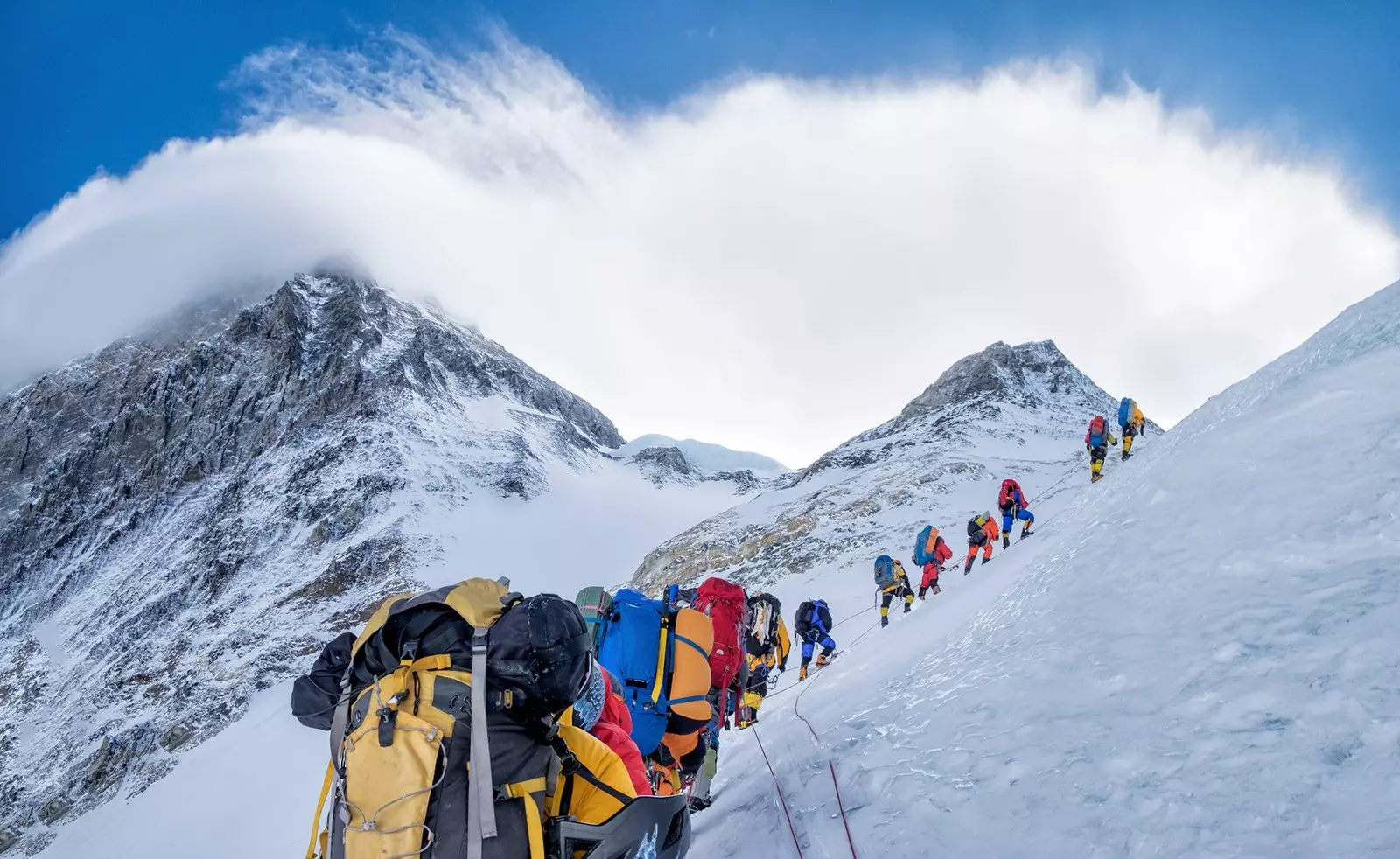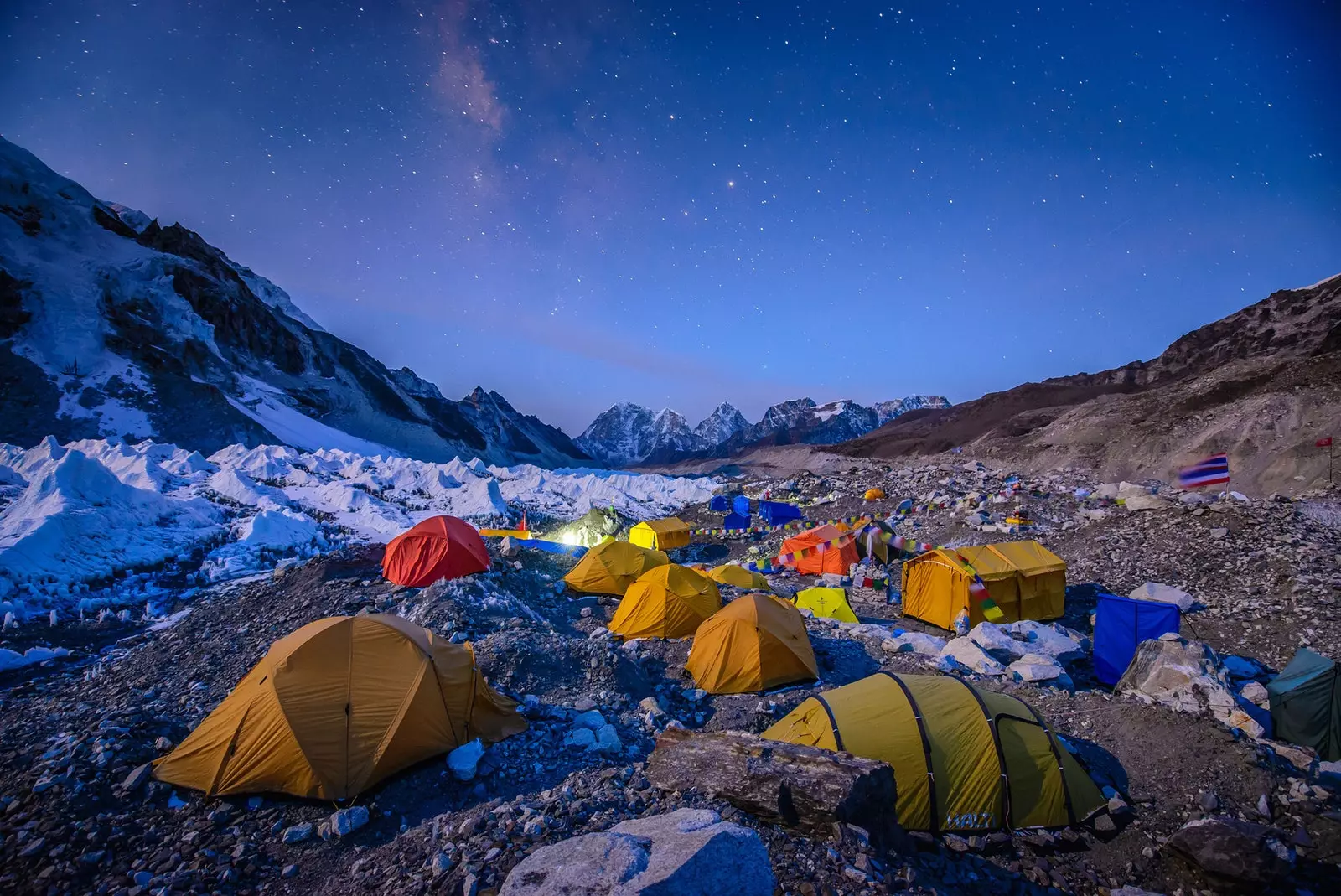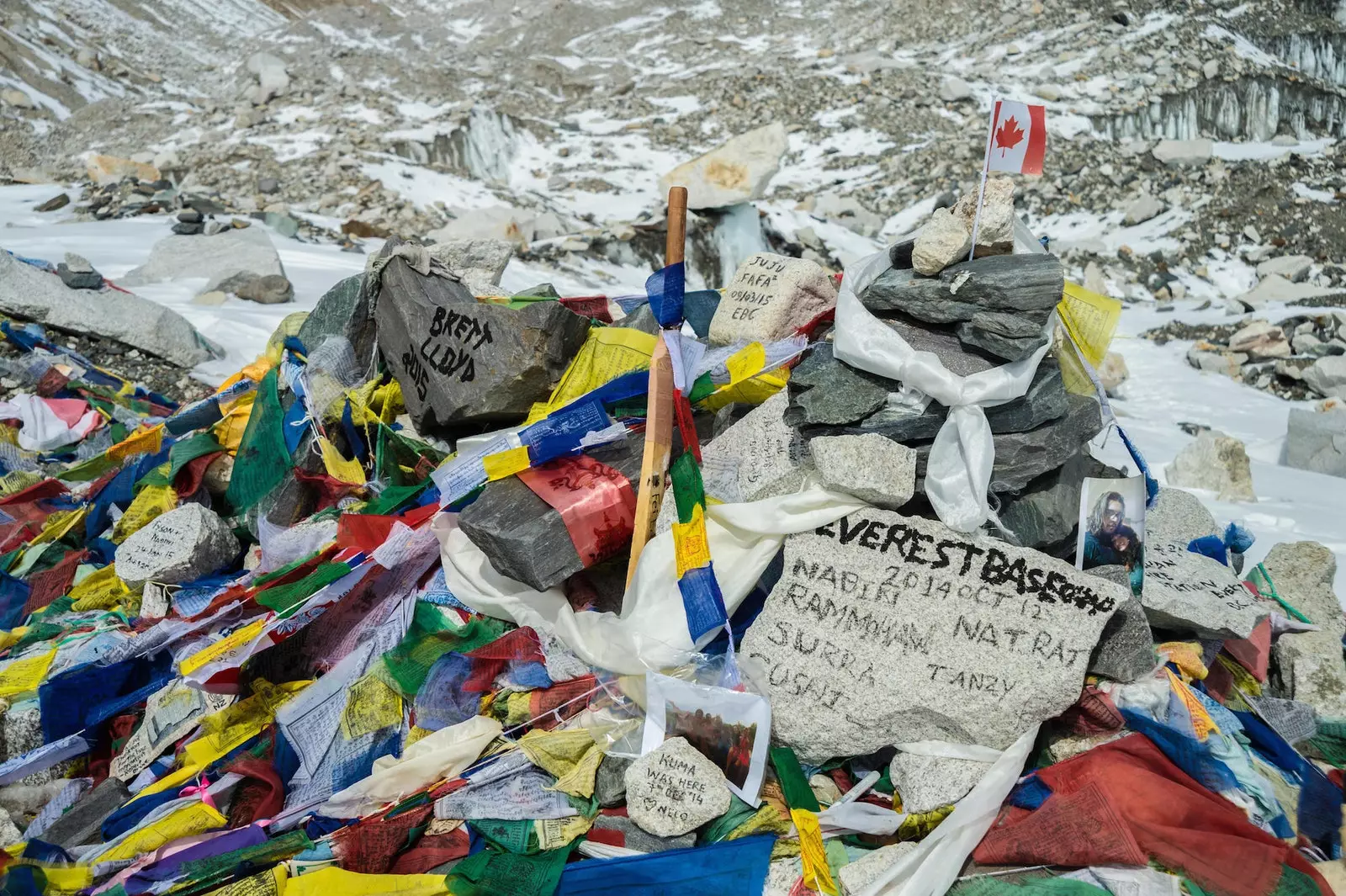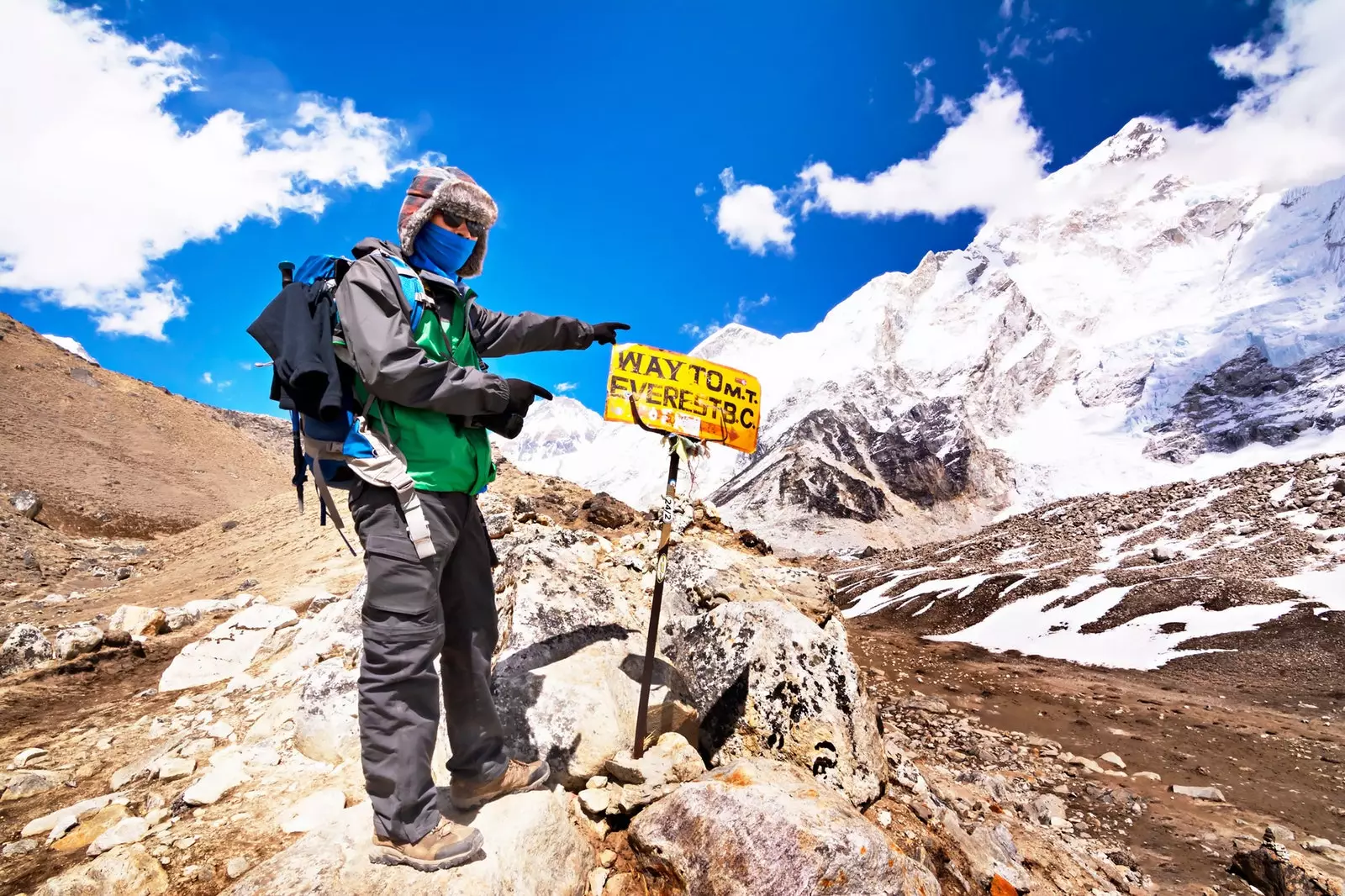
The viral image of the year on top of Everest has spread a big lie
The human jam on the roof of the world as a metaphor for human stupidity is now officially the most commented photo in the history of high mountains . Before the truth is hidden under a snowstorm, the protagonists of what happened on the roof of the world raise their voices against the lies of the fake news.
First it was the photo and, without reaction time, the video was released . If the still image looked like a photomontage, the video was a bath of harsh reality as metaphor of human stupidity . More of 200 climbers in the form of a multi-colored snake queuing for 2 hours to reach the top of Everest.
The roof of the planet turned into an amusement park with people waiting their turn to take a selfie without filters at 8848 meters high. The critical voices did not take long to explode and the question arose out of nowhere among the lovers of the high mountains: Was that mountaineering, mass tourism or the banality of adventure?
** Nirmal Purja ** is the author behind the photo from last May 22nd. The Nepalese mountaineer had reached the top of the world and in full descent he saw the crowd behind him. He took off his gloves and, although his fingers were numb from the cold, he managed to take a photograph that is already part of the best and the worst that the human species is capable of achieving by simple stubbornness.
His goal was immortalize what would be a death trap in the eyes of any prudent and experienced climber. “I wanted to take the photo as proof of what was happening. Of course I was worried when I saw that gigantic tail. The wind was about 35 km/h. If it had been 5 more kilometers, there would have been more deaths that day, ”says the author of the photo before the international media.
To combat the spread of the fake news virus, he posted his testimony on his Instagram account in the face of growing controversy that accused him of being part of the problem: “ I firmly believe that nature is for everyone and not just for the rich . Personally I think and believe that the cost of permits should remain the same”. Here he refers to the voices that have been demanding for some time more expensive permits so that Everest does not become a million dollar business where nature is what matters least. Nowadays, stepping on the top of Everest has a price that ranges between 35,000 and 135,000 euros per person. And that without adding the expenses of the agencies that want their share of the cake.
But Nirmal Purja has another workaround that has nothing to do with money: “Overload problems can be easily solved by setting some fixed lines before the end of April , so climbers have a full month (May) to choose when they would like to reach the top with maximum wiggle room.” And he leaves a recommendation for all those foolish people who do not love mountaineering and only come to satisfy the craving for exhibitionism: “ For those thinking of climbing Everest in the future: don't take shortcuts or compromise your safety ”.

The tents flood the outskirts of Everest
It was inevitable that the climbers would become meme fodder on social media, although the course of events gave way to an awkward silence when news of the tragedy arrived : 11 dead after the human jam at the top of Everest summed up in a premonitory photo and video. The feeling that we are doing something very big wrong grew up among renowned experts and testimonials . But these tragic numbers hide a big lie: none of the climbers died due to congestion on the world's highest peak.
This has been certified by the Sherpas who accompanied the deceased climbers. It is true that the Nepal Department of Tourism issued a record number of permits to climb Mount Everest this season ( 381 permits ), however, the climbers who died that fateful day were not trapped in the bottleneck at the top.
That is, there is no direct link between the deaths and the photo of the traffic jam at the top..
What the deceased do have in common is that they refused to accept the advice of their sherpas, who recommended their clients to abandon when they saw the deterioration of their physical condition. Anjali Kulkarni, one of the climbers who died, did not follow Sherpa Gyaljen's instructions: "She could not even reach the area where other climbers were reportedly trapped. last decade to reach the top,” he told The Himalayan Times.

Everest Boom
With the truth on the table, we ask, from Condé Nast Traveler, great personalities of our mountain such as **Lluís Gómez, vice president of the Catalonia Hiking Center (CEC) ** and mountaineer on the 1983 and 1985 Everest expeditions : “You can climb Everest without oxygen, but you need great preparation and very good physical condition. This has been done for many years, but accepting the doping (doping) of the use of oxygen and drugs without control, lowers the difficulty of accessing the highest mountain in the world. The actual 8,848 meters becomes like climbing a 5,000 or 6,000 meter peak. Proof of this is that in 2019, of the more than 800 people who have crowned this peak, only 1 climber has achieved it without oxygen.
Gómez looks again and again at the photo in question and looks for the reasons that go beyond what is seen with the naked eye: “For the government of Nepal, this activity is the country's largest source of foreign currency income and agencies (mostly foreigners) take advantage of it to get rich quickly, putting a lot of unprepared people on the mountain without caring about the risks involved.”
And he leaves a necessary reflection aloud for do not turn professional mountaineering into a fair: “In the hands of the media and professionals is the responsibility of transmitting all the truthful and complete information to the fans. Although it may go against their economic interests. Also governments and institutions such as the **International Union of Mountaineering Associations (UIAA)** have a lot to say..... “. To this day, they still do not publish anything on their official website.

Way to Everest
For its part, the media Kilian Jornet , who dared to give a very sensible version of everything that happened, minutes after winning the Zegama AIzkorri ultra trail: “Everest is a mountain that many people want to climb. It is not a new problem, it already started with the first commercial expeditions. If there are very short windows of good weather one year, there are more problems and more deaths. The Nepalese authorities will have to reach a compromise with the overcrowding and impose a regulation ”.
The problem for the Catalan broker is that this regulation would have a dark side: “ If you fill out permits, the mountain becomes an elitist mountain like Montblanc , and in the end only the people who have more money go, not the most prepared. The mountain is not just for climbers; there is a lot of mountain to share as long as it does not deteriorate ”.
As if that were not enough, there is another factor to take into account in this photo that embarrasses the world of high mountains, and it is the health risk that those 200 climbers suffered when they got stuck without being able to move forward or backward.
According to official figures, it is known that 11 people died during the descent, but the rest of the survivors dangerously increased the chances of suffering height psychosis . A study recently published in the journal Psychological Medicine compiled 83 reports of mountaineers with optical, olfactory or acoustic hallucinations that affect above 7,000 meters. Something like a voice of conscience , but instead of giving good advice, he recommends certain death by throwing yourself into the void or ideas as crazy as taking a nap in the middle of nowhere.
They are voices that appear and disappear without further ado: “For example, they have the sensation of being at home, or of seeing buildings around them. But the most common is the third man syndrome, they feel accompanied or persecuted by one or more people”, he explains. Herman Brugger, mountain doctor of the Eurac center (Italy).
For better or for worse, a reflection is gaining more and more strength among experienced climbers: traffic jam at the top of everest happens often every season . The difference compared to other years is that this time someone took a photo that makes a difference.
Ang Tshering Lama , a professional mountaineer who was on Everest this season sums it up perfectly: "The traffic jam at the top didn't kill people. They died because of their own stupidity and ego. If they were real mountaineers, they would listen to their body more and know when to turn around Everyone knows that climbing Everest is a dangerous game. A game that can be paid with your life ".
